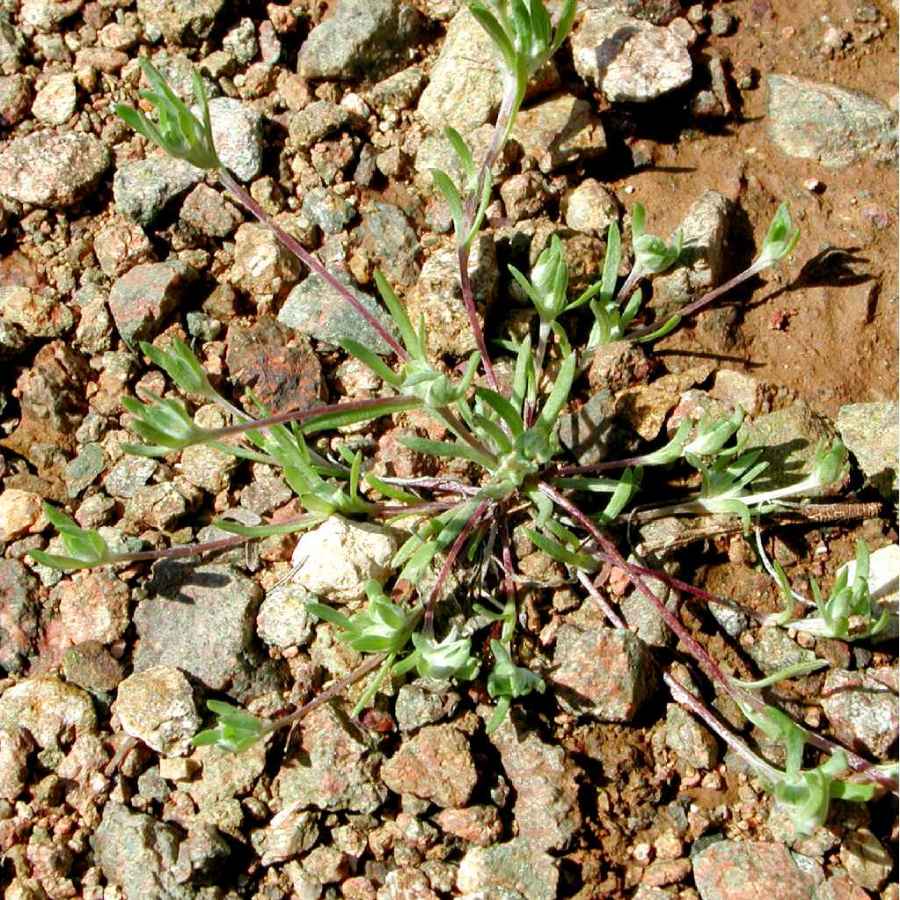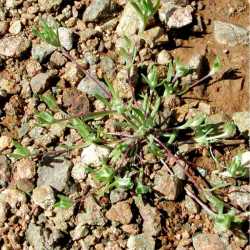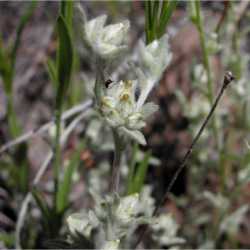Annuals, 1-50(-70) cm. Stems 1, erect, or 2-10+, ascending to prostrate. Leaves cauline; alternate; blades subulate to obovate. Heads usually in glomerules of 2-10(-14) in racemiform to paniculiform or dichasiiform arrays, or some [all] borne singly. Involucres 0 or inconspicuous. Phyllaries 0, vestigial, 1-4 (unequal), or 4-6 (equal). Receptacles fungiform to obovoid (heights 0.4-1.6 times diams.), glabrous. Pistillate paleae (except usually innermost) readily or tardily falling, erect to ascending; bodies with 5+ nerves (nerves ± parallel, obscure), lanceolate to ovate or boat-shaped, ± saccate most of lengths (obcompressed to terete, sometimes ± galeate, each ± enclosing a floret); wings erect to incurved (apices blunt). Innermost paleae usually all pistillate, in some species bisexual and pistillate, persistent, usually 5 or 8, spreading (and enlarged) in fruit, surpassing other pistillate paleae; bodies lanceolate to ovate. Pistillate florets 14-45+. Functionally staminate florets 0. Bisexual florets 2-10; corolla lobes 4-5, ± equal. Cypselae brown, dimorphic: outer compressed to obcompressed, obovoid to ± cylindric, straight or curved, longer than inner, abaxially gibbous, faces glabrous, smooth, shiny; inner ± terete, faces glabrous, usually papillate to muriculate, sometimes smooth, dull; corolla scars apical to subapical; pappi: outer pistillate 0, inner pistillate and bisexual of (11-)13-28+ bristles (visible in heads). . = 14.
See discussion of Filagininae following the tribal description (p. 385).
Logfia occurs in dry open habitats of Mediterranean, semiarid, arid, and, sometimes, humid temperate climates. The three introduced species (L. arvensis, L. gallica, L. minima) do not appear to be aggressively invasive. Logfia filaginoides (formerly known as Filago californica) is somewhat weedy in the more mesic, coastal portions of its range, where it often mixes about equally with L. gallica. Some specimens of L. filaginoides, L. depressa, and L. minima may be difficult to identify without full comparison to descriptions.
Usually included in Filago in North America, Logfia (including Oglifa) has been separated for some decades in Old World treatments. Contrary to G. Wagenitz (1969), I agree with J. Holub (1976, 1998) that the two genera warrant separation. Priority of Logfia over Oglifa at generic rank is ambiguous, however, depending on whether Logfia was validated in 1819 or 1822 (J. D. Morefield 2004). Because uncertainty remains, I here preserve current usage of Logfia, pending a proposal to conserve the name.
Morphologic evidence suggests Logfia is basal in Filagininae, with ancestral, sister, and/or reticulate relationships to Filago and Stylocline (J. D. Morefield 1992). Logfia depressa appears to be transitional toward Stylocline. Ancestors of Logfia probably resembled Gnaphalium palustre Nuttall, which is frequently misidentified as a member of Filagininae. Logfia is most easily recognized by outer epappose florets subtended by saccate paleae, prominent pappi on inner pistillate and bisexual florets, and innermost paleae open, persistent, spreading.







